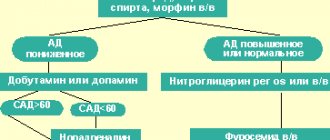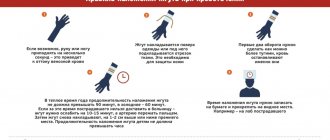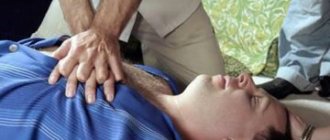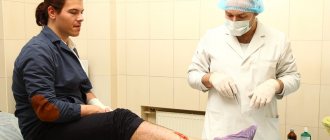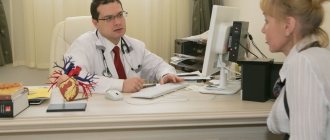Definition:
A heart attack is a condition that poses a serious threat to human life and health. A heart attack, also called a myocardial infarction, can be a fatal event. According to statistics, heart attacks are the most common cause of death and disability among the population in developed countries. A heart attack occurs when a blood clot blocks blood flow in a coronary artery (the vessel that supplies blood to the heart muscle). Interrupted blood flow to the heart can lead to damage and death of the heart muscle.
Risk factors
Most heart attacks result from atherosclerosis. The risk factors for heart attack and atherosclerosis are essentially the same:
- abnormally high levels of cholesterol in the blood (hypercholesterolemia);
- abnormally low levels of HDL (high-density lipoprotein), commonly called “good cholesterol”;
- high blood pressure (hypertension);
- diabetes;
- family history of coronary heart disease at an early age;
- smoking cigarettes, hookahs, vapes;
- obesity;
- lack of physical activity (too little exercise).
During middle age, the risk of heart attack is higher for men than for women. However, a woman's risk increases when she goes through menopause. This may be the result of a menopause-associated decrease in estrogen, a female sex hormone that may provide some protection against atherosclerosis.
Although most heart attacks are caused by atherosclerosis, there are rarer cases where heart attacks occur as a result of other diseases. These include congenital anomalies of the coronary arteries, hypercoagulability (an abnormally increased tendency to form blood clots), collagen vascular diseases such as rheumatoid arthritis or systemic lupus erythematosus (SLE or lupus), cocaine abuse, coronary artery spasm or embolus (small moving blood clot) , which enters the coronary artery and gets stuck there.
Causes
A heart attack is an acute condition that is accompanied by a sudden restriction of blood supply to the heart muscle. This happens with a disease associated with insufficient blood flow in the coronary vessels - coronary heart disease. The root cause is neoplasms and infections that lead to changes in the vascular walls. In most cases, heart attacks are caused by atherosclerosis of the heart vessels. This chronic disease affects large-caliber vessels: cholesterol deposits accumulate on their walls, which over time form dense plaques. They impede blood flow, causing oxygen deficiency in organ tissues. In addition, separated fragments of atheromatous plaque cause occlusion or stenosis. Atherosclerosis leads to the development of threatening conditions: acute coronary syndrome, heart attacks, strokes. Read more about the causes of a heart attack in the following publication.
First aid for an angina attack
Angina almost always accompanies ischemic heart disease. However, with other cardiovascular diseases (thickening of the heart muscle, anemia), attacks of angina are also recorded. Symptoms primarily include severe chest pain and shortness of breath. And the reasons are oxygen starvation of the heart tissue due to atherosclerotic narrowing of the lumen of the coronary vessels or severe vascular spasm. The trouble is that the disease manifests itself suddenly, so both the patient and his relatives must know what to do during an attack of angina, how to provide first emergency aid. It is worth remembering that this disease is a pre-infarction condition, and therefore requires qualified diagnosis and treatment. Now you can undergo a consultation and a set of preparatory examinations when registering for a course of enhanced external counterpulsation or shock wave therapy of the heart absolutely free of charge!
Promotion
Just until the end of autumn, undergo a free consultation and a set of preparatory examinations* when registering for a course of enhanced external counterpulsation or shock wave therapy of the heart.**
Send a request
* Check the details of the Promotion by phone. **Has contraindications; consultation with a doctor is required.
Enhanced external counterpulsation (EECP) Cardiac shock wave therapy (SWTS)
Hurry up to apply, the promotion period is limited.
How to recognize a heart attack?
People put off seeing a doctor because they confuse the symptoms of a heart attack with non-serious illnesses (such as digestive problems). They try to tolerate their symptoms and end up getting medical help too late. Treatment of myocardial infarction has changed dramatically in recent years. It is important to recognize the symptoms immediately and see a doctor if you suspect you are having a myocardial infarction.
Seek help immediately if pain in the heart and chest (angina attack) lasts more than 10 minutes and does not go away either at rest or after taking nitroglycerin. Pain (or obvious discomfort) may move to the shoulder, shoulder blades, neck or jaw. In such a situation, the patient is taken to a specialized cardiology clinic, where there is everything necessary to conduct a full examination and provide emergency care. Emergency cardiology specializes in such conditions.
Action tactics
If you suspect a heart attack, you should act immediately. First of all, you need to provide rest to the patient, stop performing any exercise, take a half-sitting or half-lying position, which will make breathing easier. You also need:
open a window or provide ventilation to the room;- free your neck, throat and chest from tight clothing;
- breathe steadily, taking deep, calm breaths in and out;
- if chest pain occurs, take a nitroglycerin tablet, placing it under the tongue (not recommended for pressure below 110/70 mmHg;
- if the pain lasts for more than 7–10 minutes, or if it intensifies or worsens, call someone for help, call an ambulance;
- for arrhythmia (rapid, uneven pulse and heartbeat), washing with cold water, a compress on the face or forehead can help;
- in case of dizziness and a state close to loss of consciousness, it is necessary to raise the position of the legs, which will ensure better blood flow to the upper body;
- if vomiting or nausea occurs, do not lie down to avoid aspiration (choking) of vomit;
- While waiting for a doctor, you should not take other medications or attempt self-medication.
Emergency care algorithm
In case of a prolonged attack of angina with chest pain or atypical symptoms lasting more than 5–15 minutes, medical intervention is necessary, otherwise there is a high risk of developing the most acute stage of a heart attack.
In the event of a heart attack, an emergency medical technician or a hospital emergency department doctor urgently provides the following measures:
If the pain syndrome persists, the patient is given one dose of Nitroglycerin, in a tablet, capsule or aerosol under the tongue. The drug is contraindicated in case of a sharp drop in blood pressure, hypotension or collapse.- Another necessary remedy is Acetylsalicylic acid (Aspirin Cardio or an analogue) in a dosage of 325 - 300 mg.
- At the same time, an electrocardiogram is taken to identify signs of myocardial ischemia (insufficient blood supply) to the heart area, confirming or refuting the diagnosis of unstable angina or heart attack. And an oxygen mask is put on to prevent hypoxia.
- In case of a heart attack with severe chest pain, the patient can be given an intravenous painkiller (Analgin 2.0 - 4.0 50% solution or Promedol, Morphine in a dosage of 1.0 - 2.0 ml 1%).
- For high blood pressure, medications to lower blood pressure are indicated: Propranolol 10-30 mg per day, or Metoprolol 50 mg.
In a hospital setting, the issue of further treatment of the patient is decided. If a heart attack is confirmed and an attack is detected in the first hour, the specialist may prescribe diagnostic coronary angiography or stenting at the Cardiology Center for Vascular Surgery. These minimally invasive surgical techniques are carried out with the aim of identifying a clear area of blockage of a heart vessel, expanding it with the help of a stent to restore patency, blood flow and nutrition of the heart muscle.
In the absence of signs of a heart attack and confirmation of unstable angina, inpatient treatment is required for a period of 10–14 days and subsequent prophylaxis to prevent complications.
What to do if you see a person with a developing myocardial infarction?
If you encounter an unconscious person due to a suspected myocardial infarction, call an ambulance. If you are trained in first aid, begin cardiopulmonary resuscitation (CPR). This will help deliver oxygen to the body and brain.
Begin CPR with chest compressions. Press down on the chest about 5 cm with each compression at a rate of about 100 compressions per minute. If you are trained in CPR, check the person's airway and give breaths every 30 compressions. If you are not trained in CPR, continue to perform chest compressions only.
Complications
Complications of myocardial infarction are associated with myocardial damage. This damage leads to the following conditions:
- Heart rhythm disturbances (arrhythmias). Types of arrhythmia are bradycardia and tachycardia. As a result of damage to the heart muscle due to a heart attack, electrical instability of the myocardium develops. It manifests itself as an abnormal heart rhythm and can be serious, even fatal. In this case, the patient is advised to install a pacemaker.
- Cardiogenic shock. Another deadly condition that accompanies myocardial infarction. In severe heart attacks, the heart loses its ability to pump blood—cardiogenic shock occurs.
- Myocardial rupture. An area of the myocardium weakened by the infarction may rupture, creating a hole in part of the heart. This complication is fatal.
- Heart failure. The amount of damaged heart muscle as a result of a heart attack can be so great that the remaining part of the myocardium is not able to adequately perform its job of delivering blood to the organs and tissues of the body. Reduced blood flow to organs and tissues leads to shortness of breath, increased fatigue and swelling of the legs. Heart failure is temporary and resolves after some of the damaged myocardium (stunned myocardium) has recovered, usually within a few days or weeks. There is also a chronic condition if a large area of the myocardium is irreversibly damaged.
- Heart aneurysms. Necrotic areas of the heart muscle are replaced by connective tissue. As a result, post-infarction cardiosclerosis develops, which leads to protrusion of the heart wall - an aneurysm.
- Problems with the heart valves. If parts of the heart valve apparatus are damaged as a result of a myocardial infarction, this leads to serious or even life-threatening valvular insufficiency.
Complications of myocardial infarction
Each coronary artery sends blood to a different part of the heart muscle. The extent of muscle damage depends on the size of the area supplied by the blocked artery and the amount of time between the attack and treatment.
The heart muscle begins to repair itself soon after a heart attack. This takes about 8 weeks. As with skin wounds, a scar forms on the damaged area. But new scar tissue moves differently than healthy tissue. Thus, the heart cannot pump as much blood after a heart attack and heart failure is a complication. The extent to which this ability to pump blood is impaired depends on the size and location of the scar.
In addition, some coronary arteries supply blood to areas of the heart that regulate the heartbeat, so a heart attack sometimes causes potentially fatal abnormal heartbeats called cardiac arrhythmiasSource: Complications of Myocardial Infarction in the Elderly. Khalmukhamedov B.T. Eurasian Journal of Cardiology, 2021. p. 29-30.
Tests and diagnostics
If you have had or are suspected of having a heart attack, your diagnosis is most often made by emergency physicians. You will be asked to describe your symptoms and your blood pressure, pulse and temperature will be taken. You will be connected to a monitor and will immediately begin to diagnose your myocardial infarction.
Healthcare professionals will listen to your heart and lungs with a stethoscope. You will be asked about your medical history and your family history of heart disease. A subsequent cardiac examination will help determine what is causing the pain.
Examinations include:
- Electrocardiogram (ECG). This is the first test that is performed to diagnose myocardial infarction. It is carried out while you are being asked about the symptoms of the disease. This test records the electrical activity of the heart using electrodes attached to the skin. Electrical impulses are recorded as a waveform and recorded on a monitor or paper. Since myocardium damaged by a heart attack does not conduct electrical impulses in the normal way, an ECG will show that a myocardial infarction has occurred or is progressing.
- Blood analysis. If myocardial infarction develops, the content of cardiac enzymes in the blood increases. Emergency room doctors will take blood samples from you to check for these enzymes.
First aid
If you have a heart attack, act immediately. Many people wait too long because they do not recognize warning signs. Take the following steps:
- Call an ambulance. If you suspect a myocardial infarction, do not hesitate to call. Immediately dial 03, 911 or 112. If you do not have access to a telephone, find someone who can take you to the nearest medical facility or heart center. If you drive in this condition, you are putting yourself and others at serious risk.
- Take nitroglycerin if you have been prescribed it. If your doctor prescribed nitroglycerin, take it as directed while you wait for emergency personnel to arrive.
- Take aspirin if it is recommended for you. If you are concerned about your risk of heart attack, ask your cardiologist if you can chew an aspirin tablet. Taking aspirin during a developing heart attack will help reduce damage to the heart by reducing blood clots.
Additional Research
If you have a heart attack, your cardiologist will begin immediate treatment efforts. Additional research:
- X-ray examination of the chest organs. A chest x-ray will help the doctor evaluate the size of your heart and the vascular pattern of your lungs and the presence of fluid in the pleural cavity.
- Echocardiography. This test is based on the emission and recording of reflected sound waves that create an image of the heart on a monitor. Echocardiography helps visualize the part of the myocardium that is damaged as a result of a heart attack and is not able to normally push blood through the vessels.
- Coronary angiography (catheterization of the coronary arteries). This type of coronary exam will show narrowing or blockage in the arteries that supply blood to the heart (coronary arteries). A liquid X-ray contrast agent fills the arteries supplying blood to the heart through a long, thin catheter. It is at the mouth of the coronary arteries through the femoral artery (in the groin area) or the radial artery (in the wrist area). When the arteries are filled with contrast, they become visible under X-ray guidance, revealing narrowing of the lumen and its complete blockage. In addition, since the artery is accessible, the doctor can treat coronary artery disease by performing coronary angioplasty and coronary artery stenting. During angioplasty, thin balloons are used that are delivered to the site of narrowing of the artery and inflated, expanding the lumen. In most cases, a mesh tube called a stent is then placed in this area of the artery. It keeps the artery open and prevents re-stenosis of the vessel lumen in the future.
- Stress test with load. Several days or weeks after your heart attack, you may be given a stress test. A stress test diagnoses how your heart and blood vessels respond to stress. You will walk on a treadmill or pedal a bicycle ergometer while an ECG or ECHO is recorded. If the patient is not ready for exercise, he is prescribed medications that stimulate the heart. A stress test will help your doctor determine the best treatment option. If your doctor wants to see an image of your heart during exercise, he will order a myocardial scintigraphy, a test similar to an exercise stress test that uses a special radiopharmaceutical and special imaging techniques.
- Coronary computed tomography (CT) or magnetic resonance imaging (MRI). This test is used to diagnose heart disease, including damage due to myocardial infarction. During a CT scan, you will lie on a table inside a tunnel-like machine. An X-ray machine rotates in this tunnel, recording and creating a series of images of your heart and chest organs. During this test, a radiopaque contrast agent is sometimes injected to visualize the coronary arteries. During an MRI, the patient lies on a table inside a similar tube-like machine that creates a magnetic field. The magnetic field arranges the atoms of cells in a certain way, and the device registers radio waves as a result of this rearrangement, depending on the type of tissue. These signals are processed and create an image of the heart.
Medications
- Aspirin. You will receive aspirin from emergency personnel or upon arrival at a medical facility. Aspirin reduces blood clotting and helps maintain blood flow through a narrowed vessel.
- Other antiplatelet drugs. The emergency room doctor may give you other drugs that work similar to aspirin and prevent blood clots. These are clopidogrel (Plavix), ticagrelor (Brilinta) and other drugs - platelet aggregation inhibitors.
- Thrombolytics. These drugs, also called “clot killers,” are widely used in the treatment of cardiac ischemia. They help dissolve blood clots that block blood flow in the coronary arteries. The earlier treatment with thrombolytics is started during myocardial infarction, the greater the chance of survival and the smaller the area of damaged myocardium.
- Other drugs that thin the blood. These include heparin, which makes the blood less “viscous” and less capable of dangerous blood clots. Heparin is given intravenously or subcutaneously in the first few days after myocardial infarction.
- Medicines that relieve pain. If you experience severe chest pain, you will be prescribed painkillers such as morphine. This will reduce the unpleasant symptoms of vascular diseases.
- Beta blockers. These drugs help relax the heart muscle, slow the heart rate, and lower blood pressure, making it easier for the heart to pump. Beta blockers limit damage to the heart and prevent future heart attacks.
- Nitroglycerine. The drug is used to treat angina pectoris. It temporarily widens the arteries, improving blood flow to and from the heart.
- Cholesterol-lowering drugs. These are statins, niacin, fibrates and bile acid sequestrants. They help lower levels of unwanted blood cholesterol and are useful soon after a heart attack to improve survival.
What to expect from the doctor?
The doctor will ask questions - be prepared to answer them. When you see a cardiologist, you will be asked:
- When did you first experience symptoms that seemed suspicious for heart disease, such as chest pain (angina) or shortness of breath?
- Are the symptoms continuous or sudden?
- How severe are your symptoms?
- What helps resolve these symptoms? If you experience chest pain, does it go away with rest?
- What worsens or triggers symptoms? If chest pain occurs, does physical activity make it stronger and help it continue?
- Has there been a history of heart disease in your family?
- Have you been diagnosed with high blood pressure, high cholesterol or diabetes?
Surgical methods
In addition to drug therapy, the following procedures are offered for effective treatment of myocardial infarction:
- Coronary angioplasty and stenting;
An emergency angioplasty procedure aims to open a blocked artery, allowing blood to flow freely to the myocardium. The doctor will insert a special long, thin tube (catheter) into the blocked coronary artery through an artery in the leg in the groin area or in the arm in the wrist area. Through this catheter, a special guide and balloon are brought to the affected area of the artery.
The balloon is guided through a guidewire to the affected area of the artery and inflated, facilitating the opening of the vessel. After this, a metal stent is implanted into this section of the artery - it will maintain the artery in a straightened state for a long time. It is better to implant a stent with a drug coating, which prevents restenosis - repeated narrowing of the vessel in this area. Read more about the benefits of balloon angioplasty here.
- Coronary bypass surgery;
In difficult cases, cardiac surgeons perform emergency coronary bypass surgery during a myocardial infarction. Coronary bypass surgery involves suturing a vein or artery to a coronary artery in a place after blockage or narrowing of the latter, thus restoring blood flow through the vessel.
Diagnostics
Once a heart attack occurs, the patient needs prompt medical attention to open the blocked artery and reduce the damage. At the first sign of a heart attack, you need to call an ambulance. The best time to treat a heart attack is within 1-2 hours after symptoms appear. A longer wait means more damage to the heart and less chance of maximally complete recovery and rehabilitation after a myocardial infarction. Source: On the issue of overdiagnosis of myocardial infarction. Kim A.O., Kausova G.K. Bulletin of the Kazakh National Medical University, 2021. p. 28-29.
Emergency doctors will ask the person about all the symptoms and perform several tests:
- An ECG (electrocardiogram) can determine how much heart muscle has been damaged and exactly where (types of heart attack). It can also monitor heart rate and rhythm. If there are signs of damage according to the ECG, immediate hospitalization is indicated. The clinic urgently performs additional diagnostic methods.
- Blood tests . Different levels of cardiac enzymes in the blood may indicate damage to the heart muscle. These enzymes are usually found in heart cells. When these cells are damaged, their contents, including enzymes, leak into the bloodstream. By measuring the levels of these enzymes, the doctor can know the size of the heart attack and when it started. The tests can also measure troponin levels. Troponins are proteins inside heart cells that are released when the cells are damaged due to lack of blood supply to the heart.
- Echocardiography . This imaging test can be used during and after a heart attack to see how the heart is working and which areas are most damaged. An ECHO can also determine whether any parts of the heart (valves, septum, etc.) have been damaged due to ischemia.
- Cardiac catheterization . The patient may require cardiac catheterization in the early hours of a heart attack if medications do not relieve ischemia or symptoms. The catheter can provide an image of the blocked artery and help the doctor decide on treatment.
Lifestyle changes and home rehabilitation
Your lifestyle affects your heart health. By following the recommendations for the prevention of coronary heart disease, you can not only prevent the development of myocardial infarction, but also improve your condition after it:
- Stop smoking. If you smoke, do one simple thing that will help your heart - stop smoking. Quitting smoking on your own can be difficult, so ask your doctor for a treatment plan. He will help you cope with a bad habit.
- Avoid secondhand smoke. Being around people who smoke is a potential trigger for heart attack because many of the chemicals in tobacco smoke damage arteries.
- Control your blood cholesterol levels. Get your cholesterol blood tested regularly and monitor it with your doctor. If your bad cholesterol levels are elevated, your doctor will prescribe dietary changes. He will prescribe medications that lower cholesterol and prevent vascular disease. How often you should test your cholesterol depends on how high your cholesterol levels are.
- Visit your doctor regularly and undergo preventive examinations. Some of the main risk factors for heart attack—high cholesterol, high blood pressure, and diabetes—do not appear in the early stages. Your doctor will perform tests to help identify these conditions. If a problem is detected, you and your doctor will begin treatment for early stages of cardiovascular disease. This will protect against the development of myocardial infarction in the future.
- Monitor your blood pressure levels.
- Exercise regularly. Regular exercise helps the heart muscle recover after a myocardial infarction. Exercise is an important part of a medical rehabilitation program after a heart attack. Physical activity helps prevent the onset of symptoms of coronary artery disease and the development of myocardial infarction. This is achieved by maintaining a healthy weight and controlling blood glucose levels, cholesterol levels and blood pressure. Walking for 30 minutes every day, five days a week, will improve your health.
- Maintain your weight within a healthy range. Excess weight increases stress on the heart and is associated with high cholesterol, high blood pressure and diabetes. Losing weight will reduce your risk of heart disease.
- Manage your stress. To reduce your risk of heart attack, reduce the number of stressful situations in your daily activities. Rethink your lifestyle at work and find a healthy way to minimize stressful situations in your life.
- Eat healthy. High levels of saturated animal fat and cholesterol in the diet lead to narrowing of the arteries of the heart. If you have had a myocardial infarction, limit your intake of fat, cholesterol, and salt. A diet with high salt levels increases blood pressure levels. Ask your doctor or nutritionist for advice on foods recommended for preventing atherosclerosis. Prepare healthy meals with your family members. Fish is one of the components of a healthy diet. It contains omega-3 unsaturated fatty acids, which help improve cholesterol levels and prevent blood clots. Eat enough vegetables and fruits. Fruits and vegetables contain antioxidants, components that help prevent damage to the wall of the coronary arteries.
- If you drink alcohol, consume it in moderation. Don't start drinking alcohol if you haven't done so before. Moderate alcohol consumption helps increase the level of high-density cholesterol, “good” cholesterol, and has a protective function in the development of myocardial infarction. Men are advised to drink no more than two drinks a day, and women no more than one. Excessive alcohol consumption increases blood pressure and triglyceride levels, increasing the risk of heart attack. One serving of alcohol is equivalent to 350 ml of beer, 120 ml of wine or 45 ml of spirits.
How to prepare for a doctor's appointment?
- Write down any symptoms you experience, including those that do not seem like symptoms associated with heart disease.
- Write down personal information that includes a family history of vascular or heart disease, stroke, high blood pressure, or diabetes; stressful situations or changes in lifestyle.
- Make a list of all medications, including vitamins and supplements, that you take.
- Ask your family or friends if they remember any information that would indicate heart disease.
- Be prepared to discuss your diet and lifestyle. If you are not following a diet or exercising regularly, be prepared to receive instructions from your doctor about lifestyle changes you should make during treatment.
- Write down questions you want to ask the doctor.
Your appointment time with your doctor is limited, so try to come up with a list of questions that can help you have an effective consultation. Here is a sample list of questions:
- What causes these symptoms and condition?
- What treatment is indicated for me?
- What foods should I eat and what should I avoid?
- What is the acceptable level of physical activity for me?
- How often should I check my cholesterol and have a cardiac screening?
- If I have other health problems, how can I treat them together?
- Are there any restrictions?
- Should I consult other specialists?
- Are there alternative drugs to the drugs that were prescribed to me?
- Are there any brochures or other self-study materials available? What websites do you recommend?
Patient support
Myocardial infarction is an unpleasant experience. Even if your doctor says everything is fine, you may still feel anxious. How will this affect your life? Will you be able to return to work or resume activities that bring you satisfaction? Will this happen again? Fear is one of the many experiences you and your loved ones will face. Other experiences after a heart attack include:
- Anger. You get angry and wonder, “Why did I have a heart attack and why now?” Feeling resentful after a myocardial infarction is a normal human reaction.
- Guilt. Family members feel guilty about your illness or take responsibility for actions that they believe caused the heart attack.
- Depression is common after myocardial infarction. You will feel that you are no longer able to do things that were previously acceptable, that you are no longer the same person you were before. Medical rehabilitation programs are effective in preventing and treating depression after myocardial infarction. It is important to tell your doctor about the signs and symptoms of depression.
These experiences arise most often and discussing them openly at a consultation with a cardiologist, with family members or a close friend will help to cope with them more effectively. You must take care of your physical and mental rehabilitation. Exercise and group activities with people who have also had heart attacks can help you cope with negative experiences and feelings.
